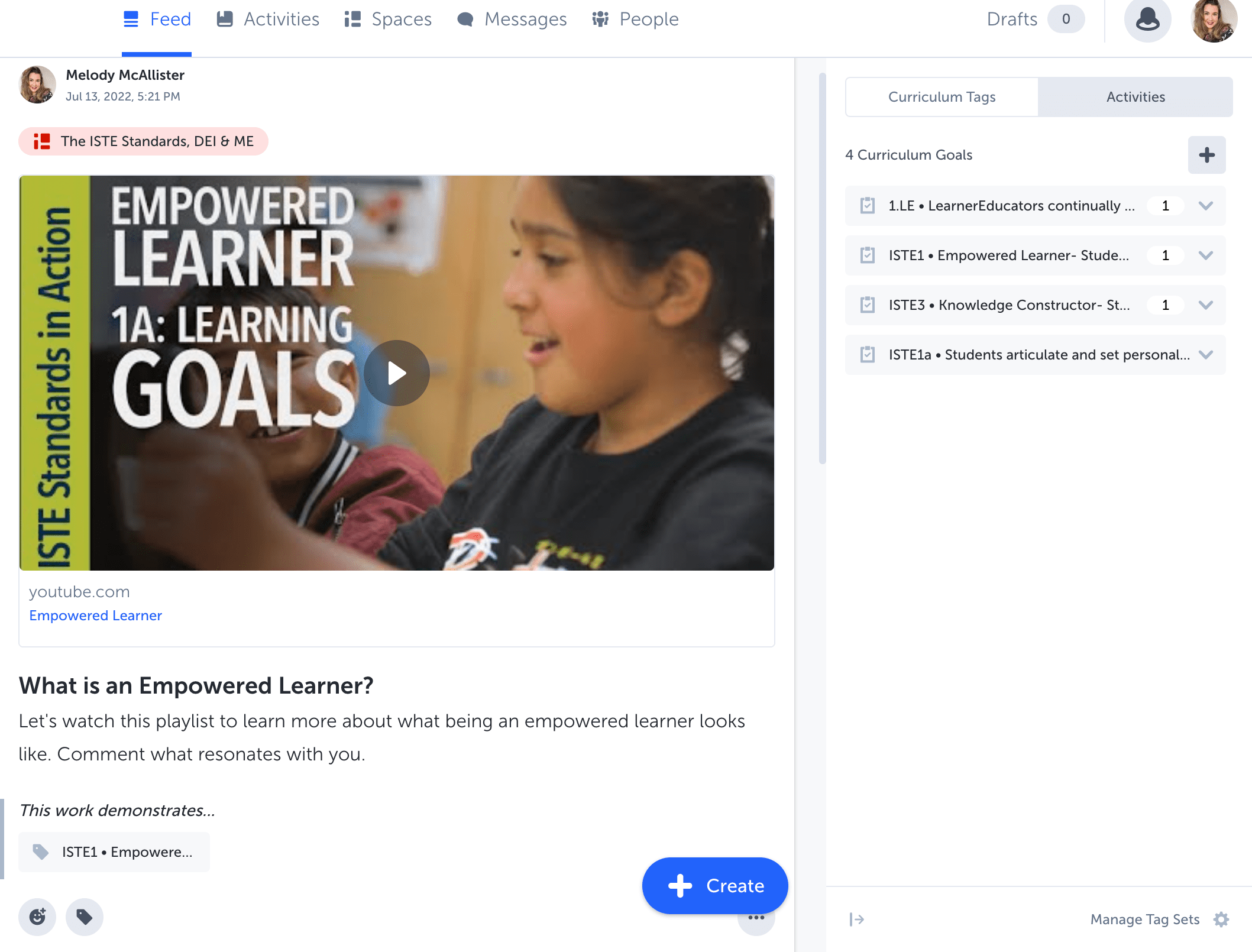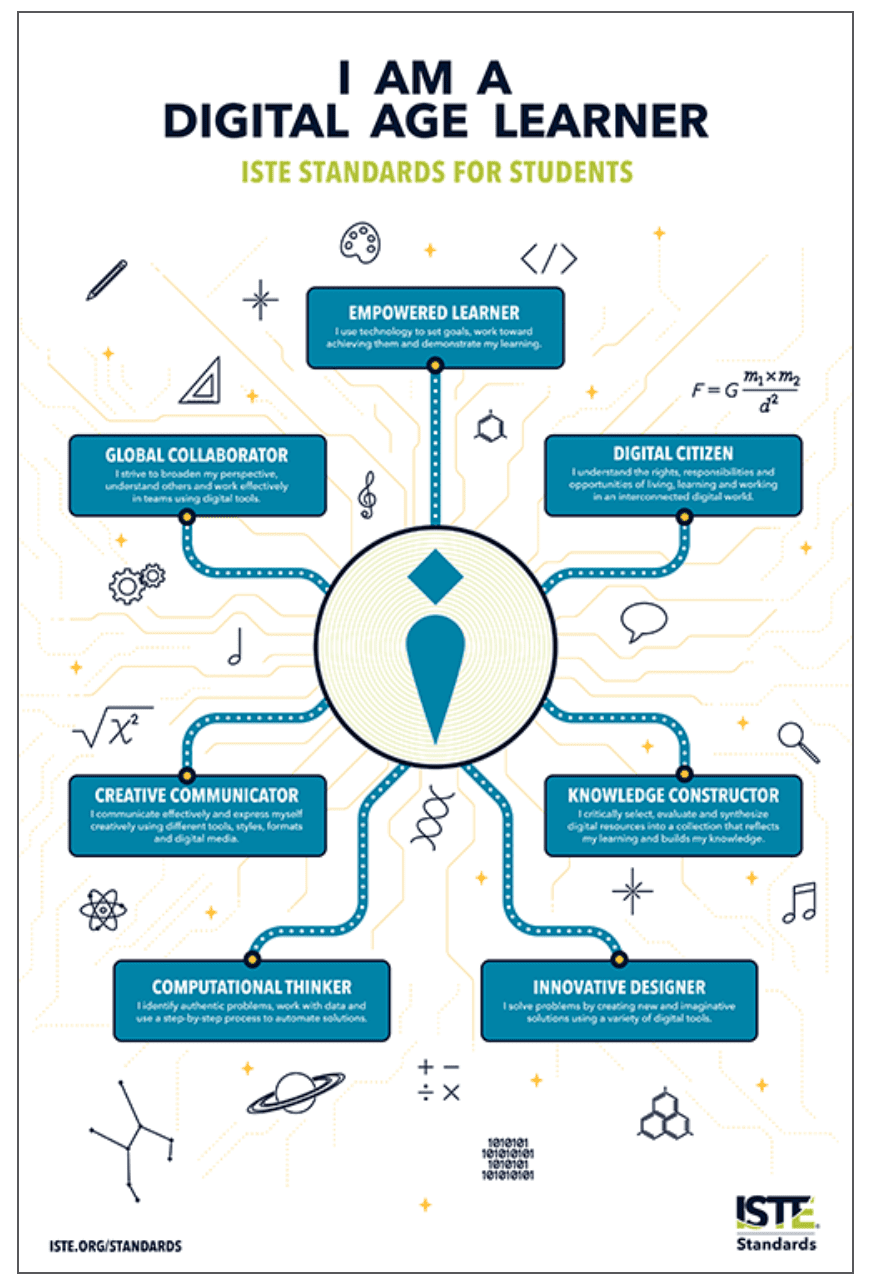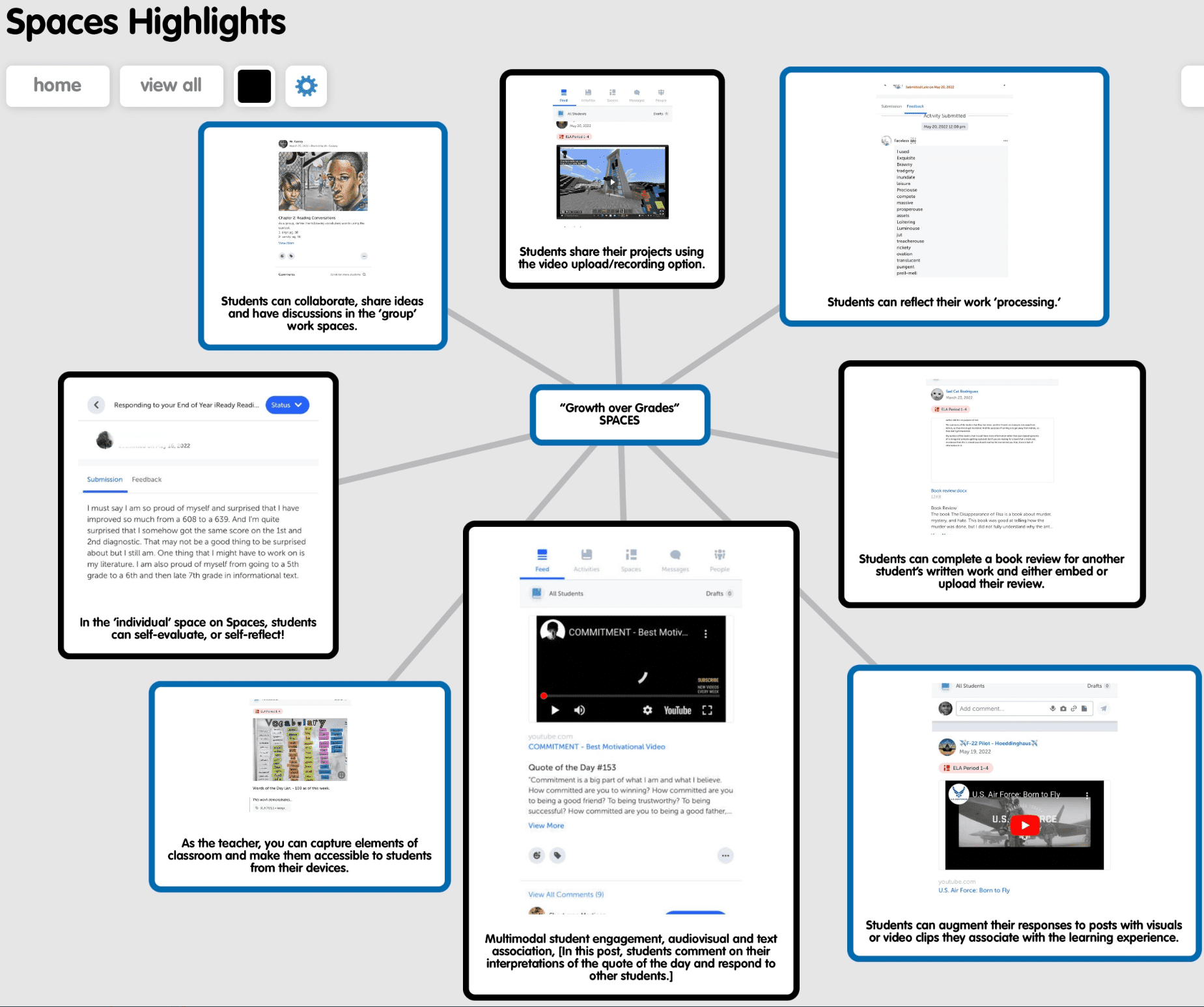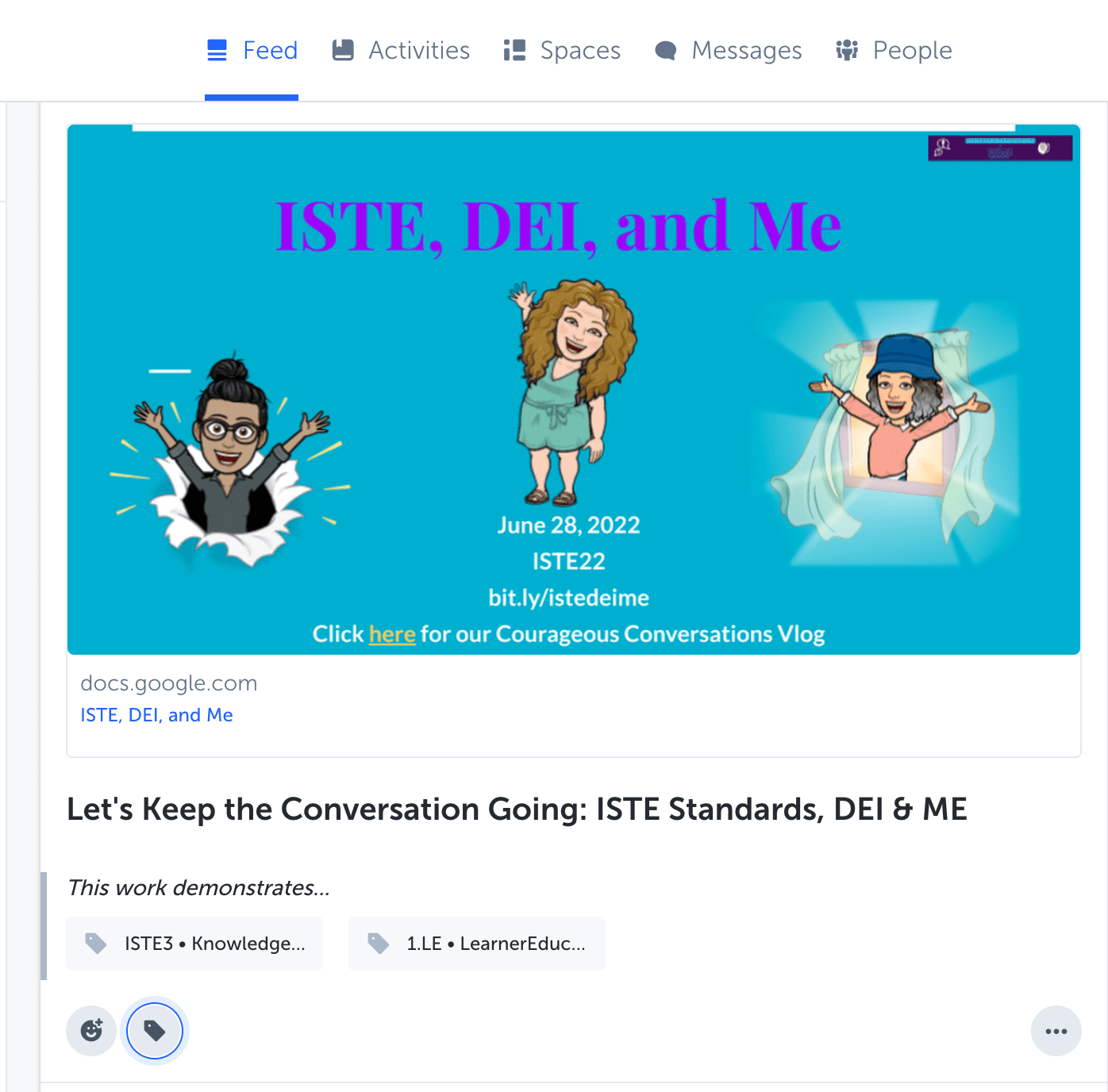Teaching students how to navigate the digital world where they are thoughtful consumers, creators, and citizens is no easy task. However, the International Society of Technology in Education or ISTE have given us seven standards to help us through this journey with our students. Once we as educators understand these standards, SpacesEDU can help us introduce, tag, and reflect on these standards with our students!
7 ISTE Student Standards
Download this FREE ISTE poster by clicking on the image!
There are seven overarching standards for students with multiple sub-standards, each. The list below was taken from the ISTE website.
1.1 Empowered Learner
Students leverage technology to take an active role in choosing, achieving and demonstrating competency in their learning goals, informed by the learning sciences.
1.2 Digital Citizen
Students recognize the rights, responsibilities and opportunities of living, learning and working in an interconnected digital world, and they act and model in ways that are safe, legal and ethical.
1.3 Knowledge Constructor
Students critically curate a variety of resources using digital tools to construct knowledge, produce creative artifacts and make meaningful learning experiences for themselves and others.
1.4 Innovative Designer
Students use a variety of technologies within a design process to identify and solve problems by creating new, useful or imaginative solutions.
1.5 Computational Thinker
Students develop and employ strategies for understanding and solving problems in ways that leverage the power of technological methods to develop and test solutions.
1.6 Creative Communicator
Students communicate clearly and express themselves creatively for a variety of purposes using the platforms, tools, styles, formats and digital media appropriate to their goals.
1.7 Global Collaborator
Students use digital tools to broaden their perspectives and enrich their learning by collaborating with others and working effectively in teams locally and globally.
You can find all of these standards and helpful ways to teach them here.
SpacesEDU Can Help
Now that you have an idea of what the standards are, you can upload them to your SpacesEDU Classes!
Introduce them to Your Class
Introduce these standards to your students in a way that makes sense with your teaching and pedagogy. Download the FREE ISTE poster and hang it on your classroom wall. You could even add it as a resource in your students’ Individual Spaces so each student has their own copy.
Not sure where to begin? Start with 1.1 as an Empowered Learner during back to school and use it to set the purpose all year long. (It’s okay if you start with 1.2 Digital Citizen!) All of these standards are interchangeable. If you’ve never taught them before, be okay with knowing you will learn what works and make necessary changes along the way. Modeling learning and teaching through these standards is very natural.
However, starting with the importance of growing into an Empowered Learner is an overarching idea that is a natural place to start. It provides students with the WHY.
Introduce one standard at a time in your class Feed, where the whole class can interact. You might share the Empowered Learner definition and a video or picture. Discuss what it looks like, and play the video(s) that ISTE shares with each standard. It never needs to be a mystery for you or your students. You can add up to 10 media files with your post!

In the class feed, the Empowered Learning Playlist was shared as a URL when creating this post. Can you see where it was tagged with the ISTE1 standard?
Tag Student Projects
Once you’ve introduced the standards in the Class Feed where all students can interact with a prompt or example, the next step might be to assign an activity where students can explore the learning with the content you provide. This would be special to the content you are teaching.
For instance, if you are using Minecraft in your classroom to explore Word of the Day like educator Dene Gainey, once you are finished, you can tag those learning artifacts with the matching ISTE Standard. Learn how he utilizes SpacesEDU with his middle schoolers in this webinar.
Educator and leader, Dene Gainey, regularly uses SpacesEDU & he created this graphic to help share how he does it! Click on the picture to see his latest webinar.
It’s All About the Process
Whether you’ve been teaching the ISTE standards for years or you are just beginning, remember it’s about the process. Mistakes are not failures, they are part of the process of learning…and aren’t truly mistakes. You may not make it through every single standard, and that’s okay. You may teach the standards in an order that works for you but seems out of order for others. It’s truly about the qualityabout quality of the process and everything you do is pointing your students in a better direction in their journey of being digital learners and creators.
We are here to help! If you’d like to join our class, “The ISTE Standards, DEI & Me” to go deeper into this, we’d love to invite you!
Click on the picture and join our class!




